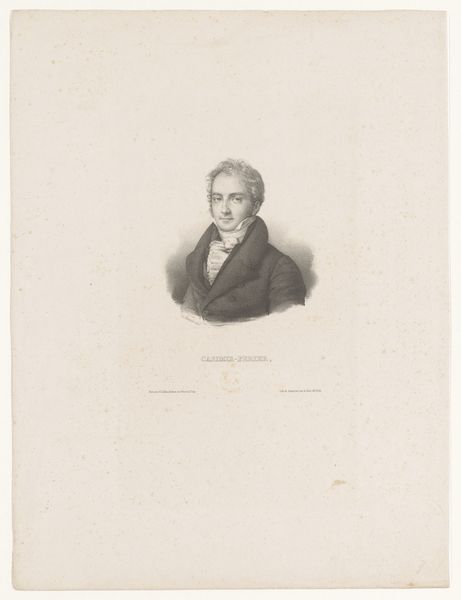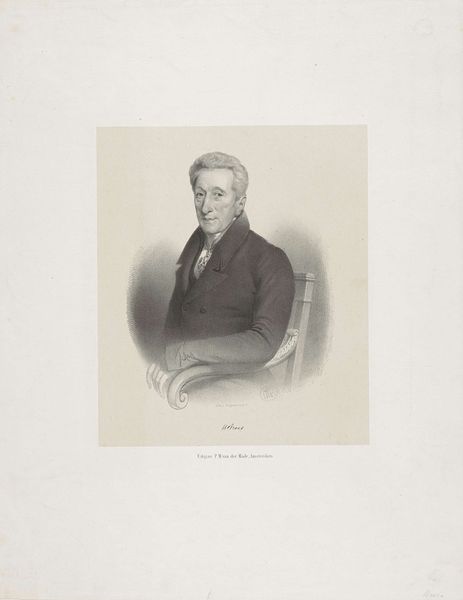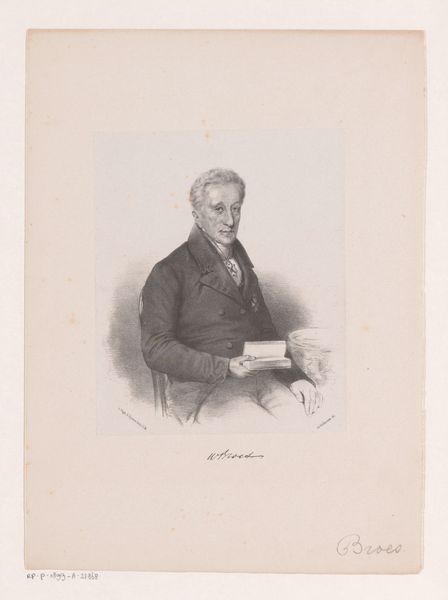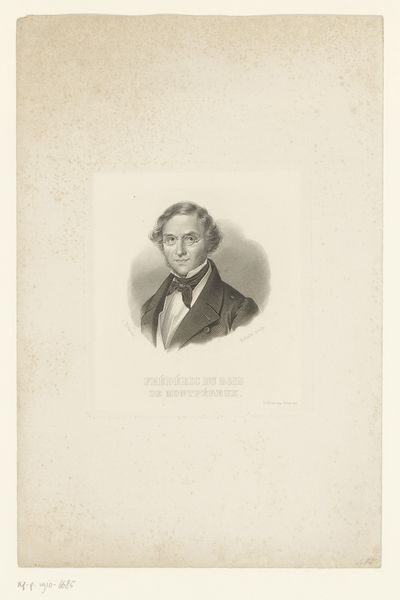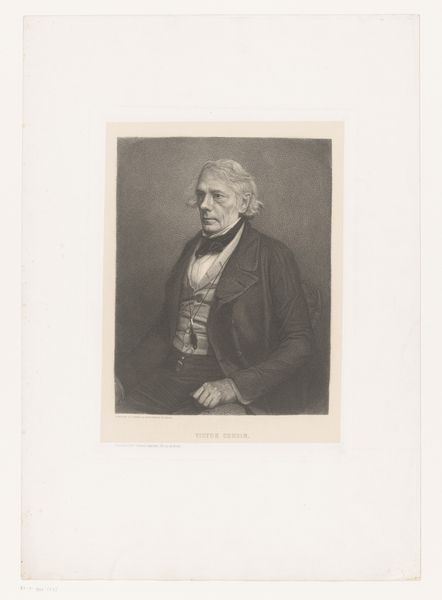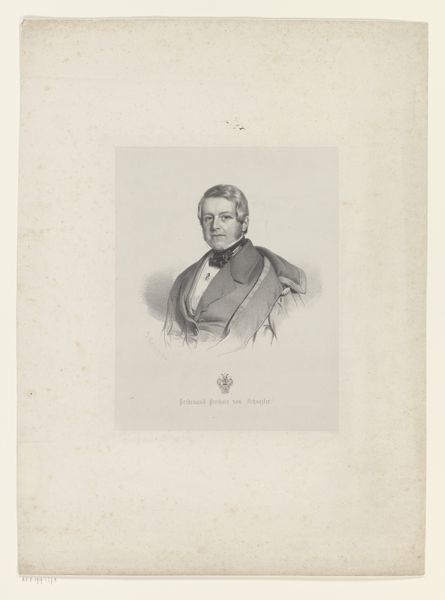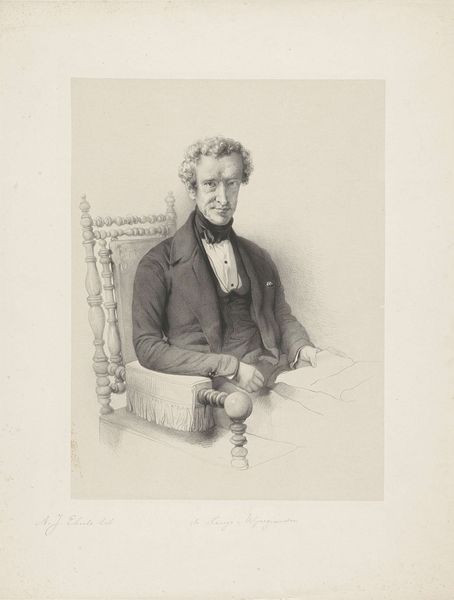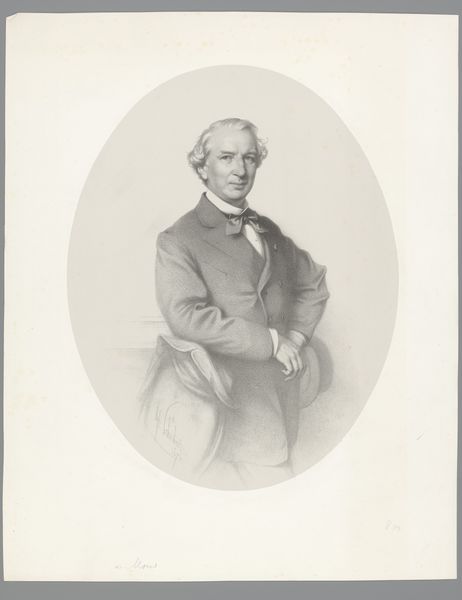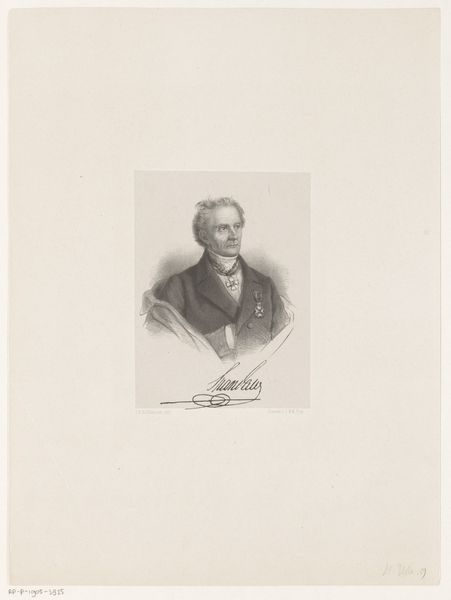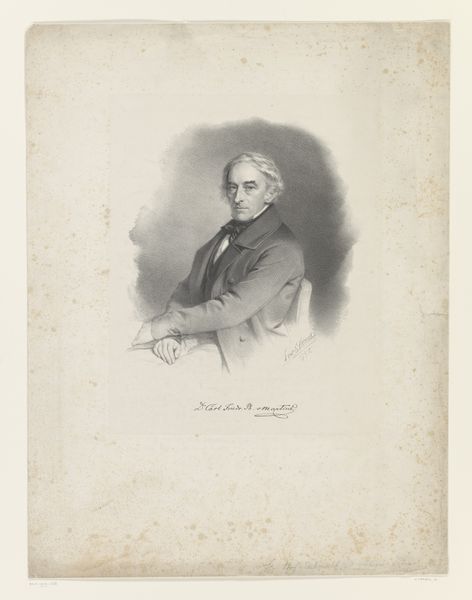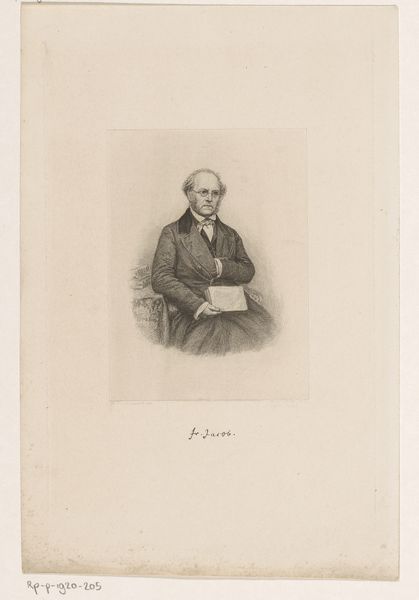
drawing, pencil
#
portrait
#
pencil drawn
#
drawing
#
pencil sketch
#
charcoal drawing
#
pencil drawing
#
pencil
#
academic-art
#
realism
Dimensions: height 485 mm, width 365 mm
Copyright: Rijks Museum: Open Domain
This is a portrait of W. Hutschenruyter, made in 1854 by Adrianus Johannes Ehnle, using lithography. Lithography is a printmaking technique that relies on the simple principle that oil and water don't mix. The image is drawn on a flat stone or metal plate with a greasy substance, then water is applied. The water adheres to the non-greasy areas, and when ink is rolled over the surface, it sticks only to the greasy image. This is then transferred to paper using a press. Look closely, and you’ll see the subtle gradations of tone and fine lines achieved through this process. Lithography was a popular method for creating affordable prints in the 19th century, making images more accessible to a wider audience. In this portrait, the lithographic technique allows for a detailed representation of Hutschenruyter's features and clothing, capturing a sense of his character and status. The very materiality of the print – the paper, the ink, and the process – all contribute to the artwork's meaning and historical context. They remind us that art is always intertwined with the materials and techniques used to create it.
Comments
No comments
Be the first to comment and join the conversation on the ultimate creative platform.
